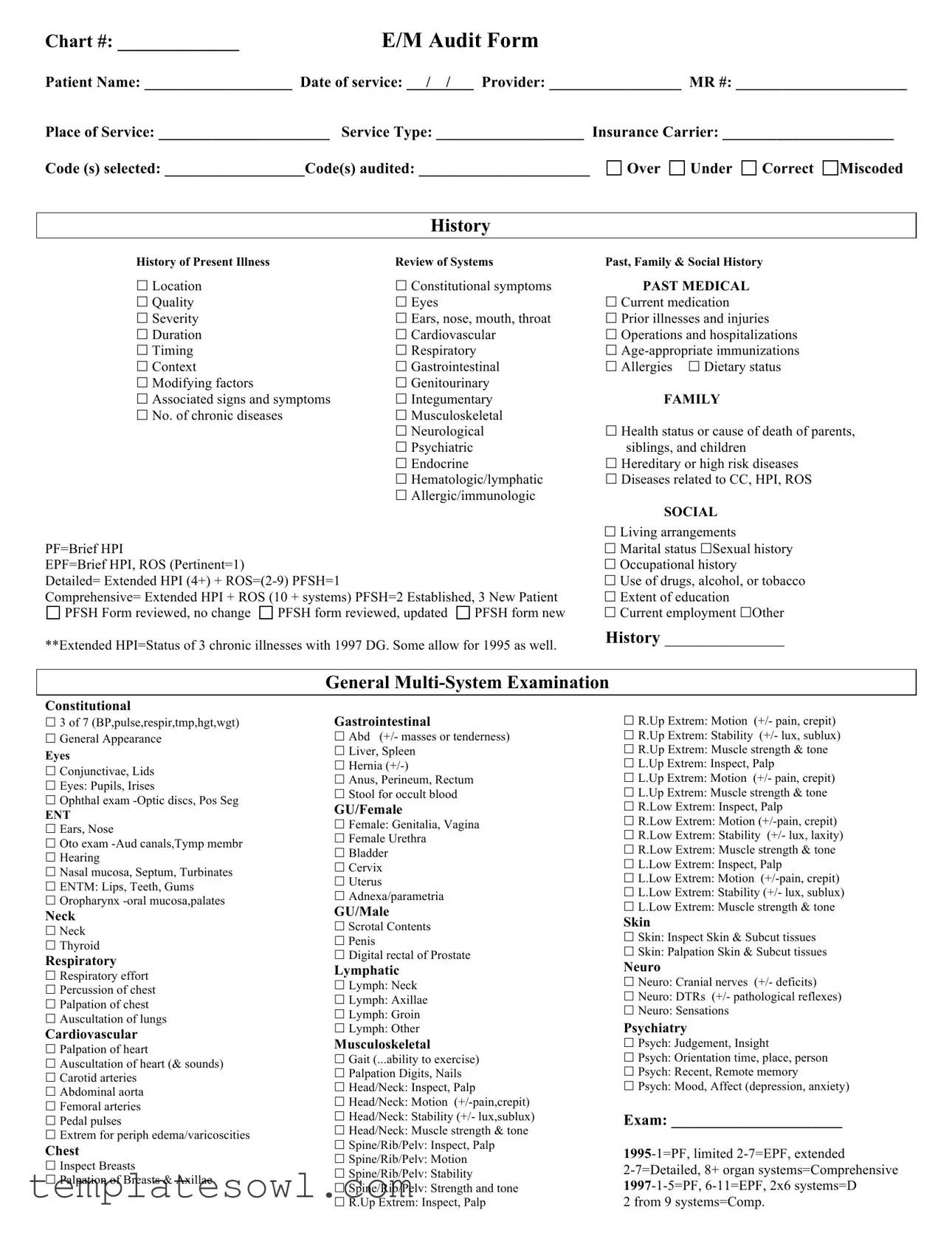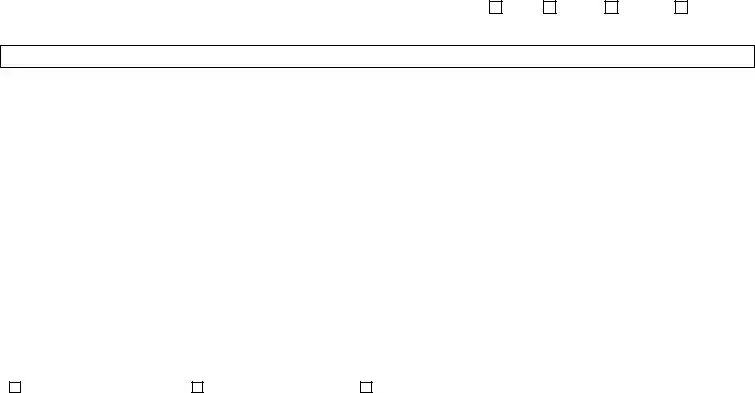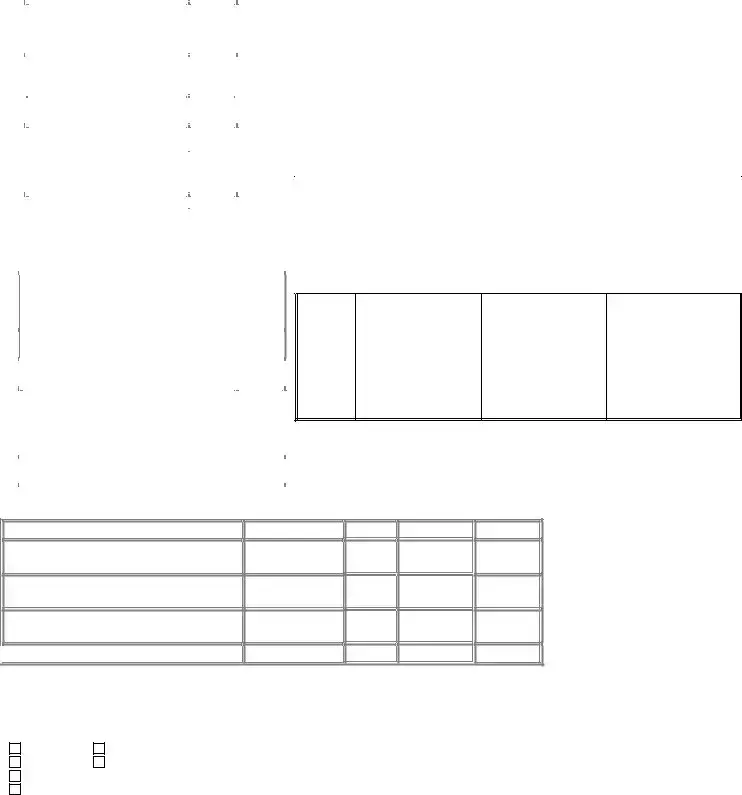Constitutional
3 of 7 (BP,pulse,respir,tmp,hgt,wgt)
General Appearance
Eyes
Conjunctivae, Lids
Eyes: Pupils, Irises
Ophthal exam -Optic discs, Pos Seg
ENT
Ears, Nose
Oto exam -Aud canals,Tymp membr
Hearing
Nasal mucosa, Septum, Turbinates
ENTM: Lips, Teeth, Gums
Oropharynx -oral mucosa,palates
Neck
Neck
Thyroid
Respiratory
Respiratory effort
Percussion of chest
Palpation of chest
Auscultation of lungs
Cardiovascular
Palpation of heart
Auscultation of heart (& sounds)
Carotid arteries
Abdominal aorta
Femoral arteries
Pedal pulses
Extrem for periph edema/varicoscities
Chest
Inspect Breasts
Palpation of Breasts & Axillae
Gastrointestinal
Abd (+/- masses or tenderness)
Liver, Spleen
Hernia (+/-)
Anus, Perineum, Rectum
Stool for occult blood
GU/Female
Female: Genitalia, Vagina
Female Urethra
Bladder
Cervix
Uterus
Adnexa/parametria
GU/Male
Scrotal Contents
Penis
Digital rectal of Prostate
Lymphatic
Lymph: Neck
Lymph: Axillae
Lymph: Groin
Lymph: Other
Musculoskeletal
Gait (...ability to exercise)
Palpation Digits, Nails
Head/Neck: Inspect, Palp
Head/Neck: Motion (+/-pain,crepit)
Head/Neck: Stability (+/- lux,sublux)
Head/Neck: Muscle strength & tone
Spine/Rib/Pelv: Inspect, Palp
Spine/Rib/Pelv: Motion
Spine/Rib/Pelv: Stability
Spine/Rib/Pelv: Strength and tone
R.Up Extrem: Inspect, Palp
R.Up Extrem: Motion (+/- pain, crepit)
R.Up Extrem: Stability (+/- lux, sublux)
R.Up Extrem: Muscle strength & tone
L.Up Extrem: Inspect, Palp
L.Up Extrem: Motion (+/- pain, crepit)
L.Up Extrem: Muscle strength & tone
R.Low Extrem: Inspect, Palp
R.Low Extrem: Motion (+/-pain, crepit)
R.Low Extrem: Stability (+/- lux, laxity)
R.Low Extrem: Muscle strength & tone
L.Low Extrem: Inspect, Palp
L.Low Extrem: Motion (+/-pain, crepit)
L.Low Extrem: Stability (+/- lux, sublux)
L.Low Extrem: Muscle strength & tone
Skin
Skin: Inspect Skin & Subcut tissues
Skin: Palpation Skin & Subcut tissues
Neuro
Neuro: Cranial nerves (+/- deficits)
Neuro: DTRs (+/- pathological reflexes)
Neuro: Sensations
Psychiatry
Psych: Judgement, Insight
Psych: Orientation time, place, person
Psych: Recent, Remote memory
Psych: Mood, Affect (depression, anxiety)
Exam: ______________________
1995-1=PF, limited 2-7=EPF, extended
2-7=Detailed, 8+ organ systems=Comprehensive 1997-1-5=PF, 6-11=EPF, 2x6 systems=D
2 from 9 systems=Comp.




 MDM Level=2 out of 3
MDM Level=2 out of 3